Blogging started gaining popularity in the early 2000s and led organisations to invest in corporate blogs. Today, content marketing is a proven and established channel for businesses. I’ve already shared a few content marketing tips and shown you numerous successful content marketing examples.
In 2020, you might have the following questions:
- How should you plan your content campaign?
- Who should you involve from your company to create content?
- What kind of content formats are your competitors and brands are relying on to achieve their goals?
Here’s a compilation of the top content marketing stats from various industry studies to show where it’s headed. I’ve divided the article into five different components related to content marketing. Click to jump to the statistics most relevant to you:
General Content Marketing Statistics
Let’s start with an overview of content and blogging statistics that establish the importance of content marketing for businesses.
1. 65% of marketing leaders believe that a brand is a critical driver of buyer behavior on existing customers, and 58% believe it impacts prospects.
An Altimeter survey of 500 senior digital marketers across North America, Europe, and China found that the top goal of a digital marketing strategy was brand awareness, followed by lead generation.
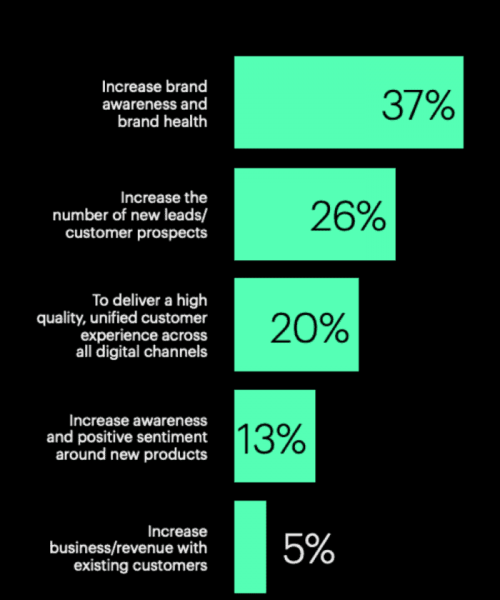
Content marketing is a great technique to build a brand and increase awareness by adding value to the lives of your customers. 70% of companies are actively investing in content marketing.
2. But how important is content marketing for marketers anyway?
An Econsultancy report found that it’s the second most important future skill for marketers.
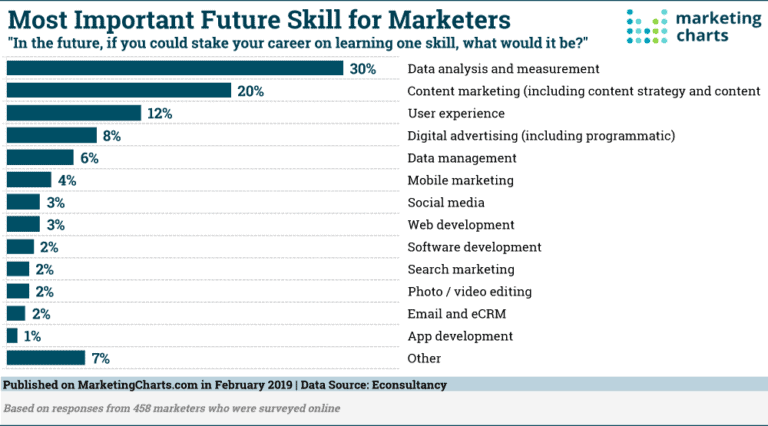
If we break it down further, social media and content promotion are the most important content marketing skills. Writing and copywriting skills occupy the second spot.
Approximately 60% of marketers rate content marketing as extremely important or very important to their marketing strategy.
3. As content marketing has matured, its effectiveness is now measured by 27.9% of marketers in terms of the sales made, and 22.4% of marketers tie it with leads generated.
Hubspot survey also found that the marketers rely on ‘total sales’ to measure the success of their content.
Want to evaluate where your organization stands? Here are the five levels of content marketing by Gartner to help you out.
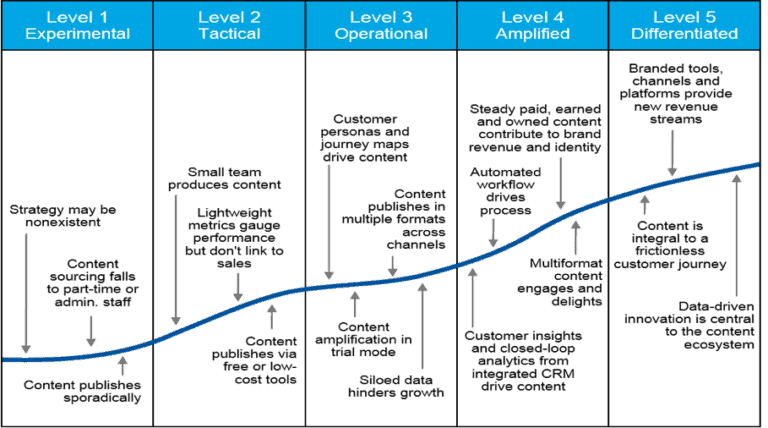
4. As you can see in the model above, content becomes a serious business with customer personas and journey maps at level 3. Defining and documenting your strategy is important even more because less than 40% of content marketers do so.
5. SEMRush report claims that the top goals of content marketing are generating high-quality leads (75%) and attracting more traffic to the site (71%).
6. 46% of companies didn’t shell more than $10k on content marketing in 2019. Most aren’t planning to increase their content budget significantly in 2020 either.
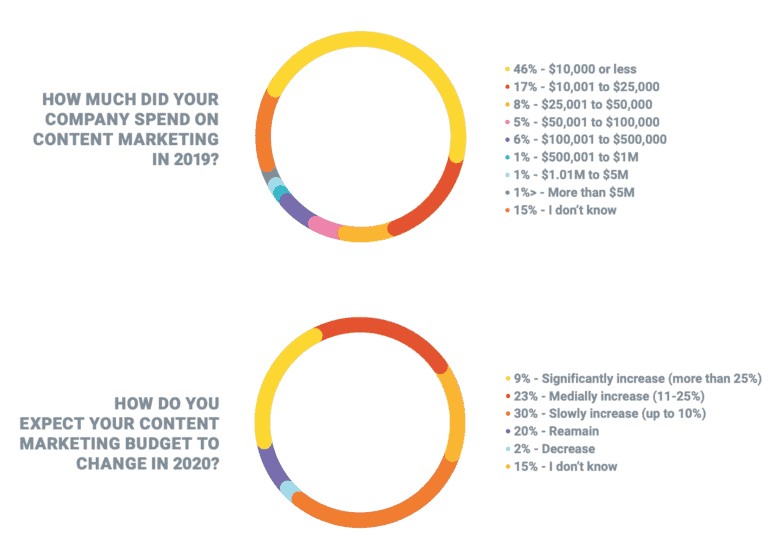
Hubspot survey found that only 24.26% of companies will increase their content budget in 2020.
7. Hubspot also derived that the top two content marketing metrics that most companies rely on are: website traffic and social media engagement. However, according to SEMRush, companies use these two metrics: organic traffic and leads.
6. Wondering about the size of teams for running content marketing?
They tend to run between 1 to 3 specialists for 78% of companies with the top three roles being: content creators, social media managers, and SEO content managers.
8. Can you guess how companies are producing high-quality content?
You’re mistaken if you mentioned their team and internal resources. Content writing tops as the most outsourced service.
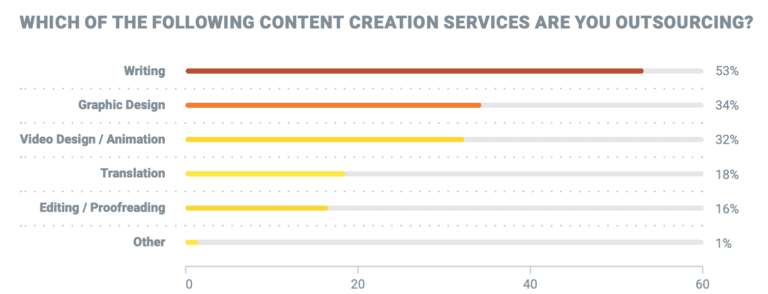
However, companies continue facing challenges with writing content that attracts more traffic and generates quality leads. The reason might be that companies underinvest in the quality of content.
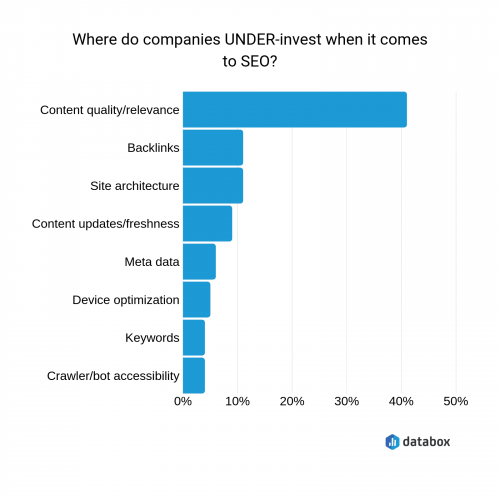
(Freelance writers take note – your services are in dire need. If you deliver persuasive content, then you can make a strong case for commanding higher rates!)
10. Mantis research found that only 39% of marketing teams have conducted an original research in the past 12 months.
So is it worth your time?
Orbit Media found that bloggers who publish original research are 2.9x more likely to report “strong” results.
11. Conducting original research can take upto 150 hours (a couple of months). It could involve types like surveying, data analysis of proprietary data, or even third-party sources.
Such research creates a substantial difference in how your brand is perceived and generates new leads for your business (besides an uptick in vanity metrics like social shares and links to your site)
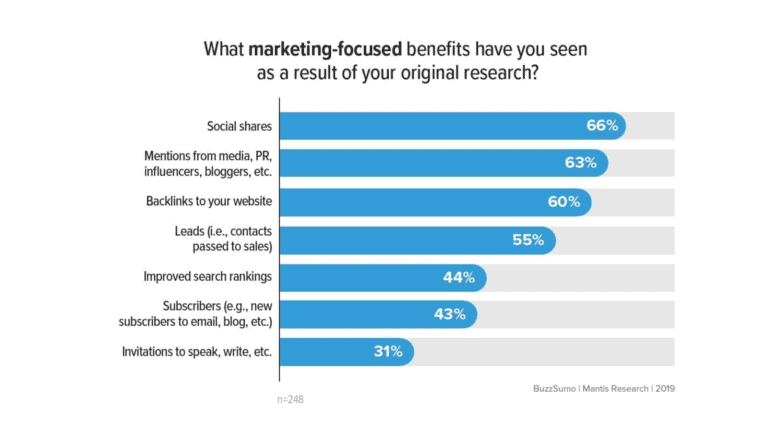
While B2B organizations leverage research better, B2C organizations are opening up to this tactic as well. So get started now!
Content Promotion And SEO Statistics
As more businesses increase their content creation, the value of distribution to get your pieces in front of your target audience keeps growing. The bar on content quality is high. But which platforms are reasonable for content promotion?
Here are the statistics on content promotion and SEO to devise an informed distribution strategy this year:
1. As per the Hubspot State of Marketing Report, around 64% of marketers invest in SEO.
2. Google Analytics and Google Search Console are the top two free SEO tools used by marketers.
3. Ahrefs found that 90.63% of pages get zero traffic from Google.
4. There’s more bad news: less than half of Google searches now result in a click. So searches that can lend organic traffic to your site are continuously declining.
Why?
Well, Google is filling the search results page with knowledge panels, ads, definition boxes, and more.
Should you aim to get exposure for your content exclusively through social media now?
5. Google continues to serve as the top traffic referrer on the web, leaps and bounds ahead of the second top referrer. So writing high-quality content and building links is still a great way to get meaningful traffic.
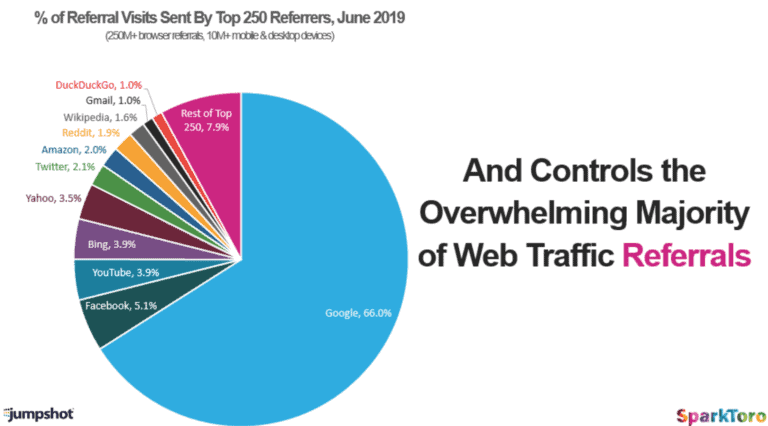
6. Research by Brightedge confirms that organic traffic continues to occupy the top spot at 53% for most sectors.
So Google is still your best friend for earning free and compounding traffic.
7. SEMRush survey results found that organic traffic is also the top metric that companies are using to measure their content success, followed by leads, pageviews, and conversion rate.
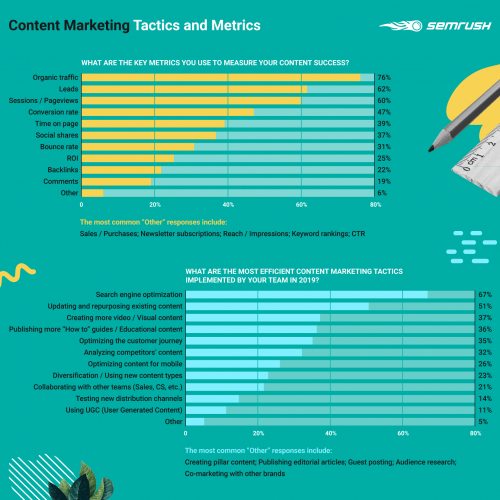
8. On the other hand, the median engagement rate on Facebook stands at .09% and 1.6% for Instagram. To get a meaningful amount of traffic, you need to invest in pay per click advertisements on these platforms (which we’ll look into later in the article).
To get more organic traffic, you need to get your content to rank in the top 10 for your target keywords because people rarely go to the second page of Google.
9. Backlinko in its study found that the CTR of the first position stands at 31.73% and falls for almost every position from there. Note that there is a vast difference in the clicks that position #1 receives on average as compared to #10.
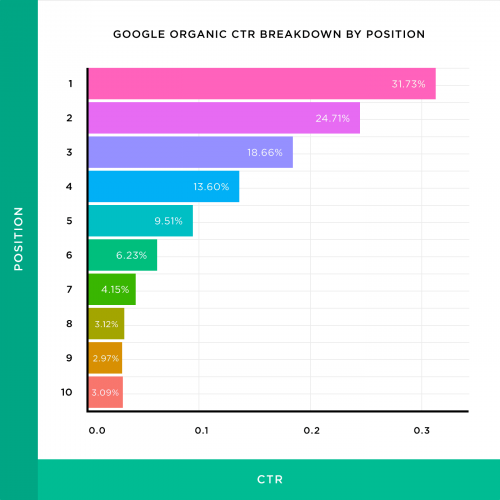
It means that you definitely need to rank your website on the first page. Your relative CTR can increase by 30.8% by moving just one position up in rankings (considering all other things equal).
So how can you rank on the first page?
Don’t rely on Google’s public statements and public guidelines alone. Marketers surveyed by Sparktoro said that most of them are either false or misleading. Let’s look at more studies and SEO statistics to nail down the important factors.
10. In a study of 1M search results:
- backlinks to a page were correlated with rankings more than any other factor,
- the number of referring domains is equally important,
- the links from the same domain have diminishing returns.
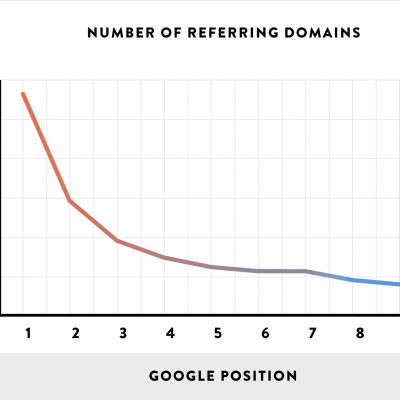
11. In their analysis of 912 million blog posts, Backlinko and BuzzSumo found that 94% of all blog posts have zero external links. So focus on building links besides writing stellar content.
Beyond search engines, what other channels should you rely on for content promotion?
12. Well, you might already be using social media given that it’s the most popular marketing channel leveraged by 94% of businesses surveyed by SEMRush.

However, set the right expectations from the get-go.
13. In a study of 3.25 billion visits by GrowthBadger, Google drove eight times more traffic than all the social networks combined!
Social media is all about relationship building. It should serve more like a branding channel where you ‘engage’ with your audience. Consider sharing external links to articles on your website only occasionally.
Further, if you’re in the B2B industry, expect fewer shares than those viral articles on B2C subjects that have mass appeal. The reason is that the subjects like marketing, hiring, branding, etc. have a niche audience.
14. Typically B2C content pieces get 9.7x more shares than B2B content.
15. Among prominent social media platforms, Facebook dominates as the most prominent traffic source. Specifically for business and marketing niches, the social network drives 13.52% of the total traffic.
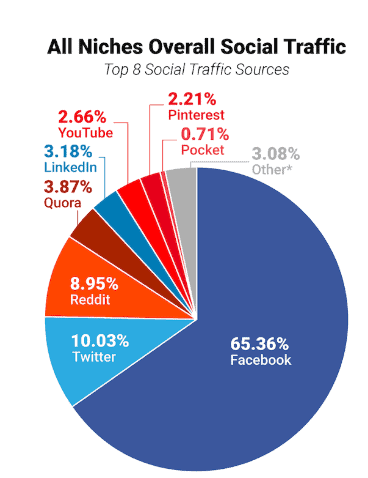
A HubSpot survey also found that Facebook was the primary content distribution channel. The reason it’s most used is it’s also the channel that provides the highest ROI.
16. While we’re discussing content distribution, don’t forget to leverage your email list for the same. Email is the only channel that you OWN that is not affected by algorithmic updates.
If you aren’t collecting emails thinking of it as an outdated medium that users don’t like, then you’re missing out.
17. The 2019 Drift report found that people use email more than any other communication channel.
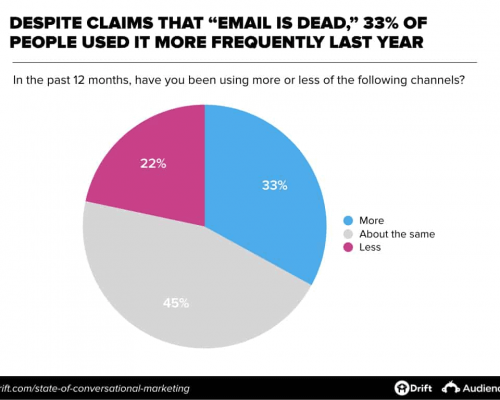
18. The ROI from email marketing stands a tad over £42 for every pound spent. The value of an individual email address stands at £37.32.
19. Another top content distribution strategy that I love using is guest posting. It increases your brand awareness, improves your site’s authority by getting mentions for your content from authoritative websites, and acts as a great relationship-building tool.
I’ve leveraged guest posting alone to take this website from a brand new WordPress installation at 0 visits/month to 4.5k visitors/month.
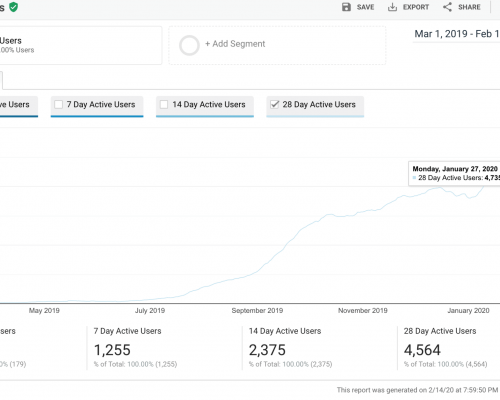
20. Before we move on to the next section, the last tip I want to share is about optimizing your title for both search engines and social media.
- For search engines ensure that your headlines are within 70 characters so that they don’t get truncated in SERP.
- For social media optimization, HubSpot found that headlines between 8 to 12 words got the most Twitter shares on average. And those with either 12 or 14 words received the most Facebook likes. So stick with these numbers.
Business Blogging and B2C Content Marketing Statistics
Did you know that 77% of people on the internet read blogs?
And the number of bloggers in the United States is expected to touch a whopping 31.7 million in 2020!
In this section, let’s niche down to the trends, budgets, and challenges specific to B2C content marketers and business bloggers. Here’s the first relevant stat:
1. In the Content Marketing Institute annual research, three out of four B2C marketers characterize their organization as extremely, very, or moderately successful with content marketing. Here are the goals that B2C marketers claim to have achieved in the last 12 months.
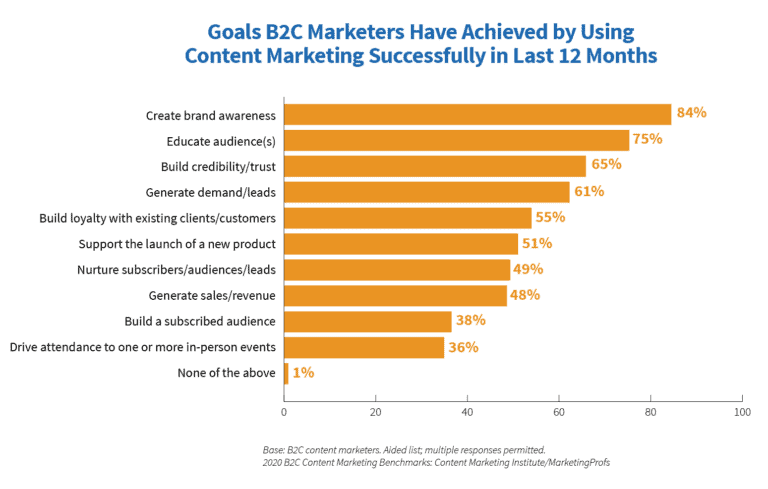
2. However, only 33% of B2C content marketers reported a documented content marketing strategy.
3. Further, only 50% of the respondents report creating content for every stage of the funnel. Remember that content is a marketing channel, and it’s essential to understand how it’s affecting your bottom line.
Most organizations solely focus on the top of the funnel and fall back to vanity metrics like traffic.
4. That’s the reason only 54% of organizations agree that they provide their customers with optimal experiences across their engagement journey. If you aren’t regularly creating content for the middle and bottom of the funnel, then it’s a great reminder to do so.
You can see the difference in reported results across various parameters by the organization’s content marketing maturity level below.
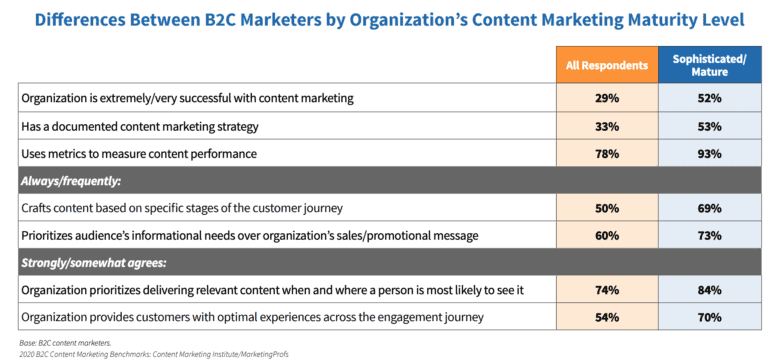
5. The top three technologies B2C marketers use to assist with content marketing are:
- social media publishing/analytics at 84%
- analytics tools at 83%
- and email marketing software at 72%
6. A survey of 1,117 bloggers by GrowthBadger found that the bloggers who earn over $50,000 per year tend to put a lot of emphasis on driving traffic from Google’s organic search. And high-income bloggers are 4.3 times more likely to conduct a keyword research than those earning below $50,000 per year.
7. For the average content creator in the United States, the salary ranges between $34,125 and $42,607.
But do you need a degree to get a content job?
Zippia found that 65.5% of content creators have a bachelor’s degree and 11.2% even have a master’s degree.
8. Longer articles have indeed become the norm as the average blog post is of 1236 words now as per an Orbit Blogger survey of 1000 bloggers. The average length is longer by 56%, in comparison to 2014. Also, bloggers now take an average of 3 hours and 57 minutes to write a blog post.
If you’re worried that ‘no one has the time to read’, then Shreya Dalela, a B2C content marketer and the founder of The Creatives Hour, clears the air.
“When I started handling content marketing for Kama Ayurveda, they already had over 40 content pieces on their blog, and were publishing new content every week. Despite that, there was no organic traffic on the blog. A major reason was lack of a content strategy. However, all the blog posts were only about 500 words on average.
“I decided to update the older blog posts, like this one on Dhanwantharam Thailam, making them more comprehensive. I also added relevant graphics. The traffic has continuously grown!”
9. In their analysis of 700,000 articles, SEMRush found that long reads of 3000+ words earned 3.5x more backlinks. They also acquired 3x more traffic and 4x more shares
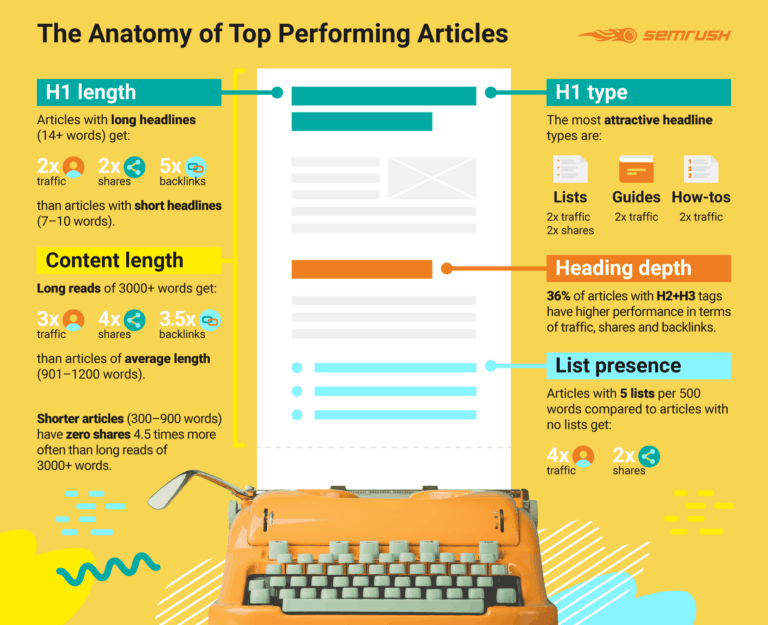
However, there might be industry-specific ranking factors that are more relevant for your business. Searchmetrics has done a great job of researching the factors for eCommerce, health, travel, finance, and media that you can check out here.
Also remember to prioritize writing for people, rather than blatantly serving search algorithms. That’s what 104 content marketers and SEOs reported in a Databox survey. Real people will buy from you, not search engines.
10. No wonder then that bloggers spending more time on their blog posts fare better. For instance, 38% of the bloggers that spend 6+ hours on a post report “strong results.”
11. The least common tactics have been found to be the most effective. A few examples are including 10+ images and drafting 20+ headlines per article, collaborating with influencers, promoting content using paid channels, and more:

12. Most content online doesn’t get enough attention on social media. A small subset of “Power Posts” (1.3% of articles) tend to get a disproportionate 75% of social shares.
To get stellar results, you need to understand the expectations of the audience from different social media platforms. Then, create content that results in consumer behavior aligning with your business goals. Here is a framework by HubSpot to help you decide.
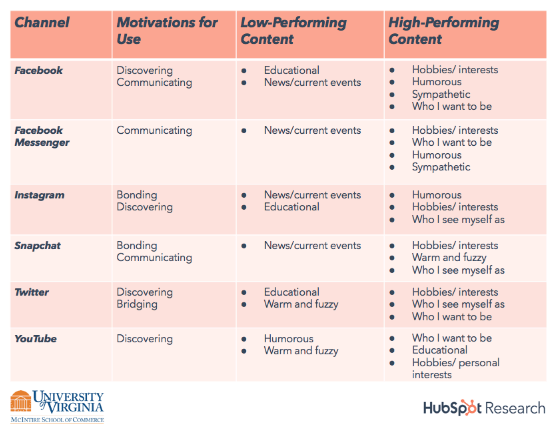
13. Bloggers earning over $50k per year use 343% as many email-collection methods as compared to their lower-income peers. 70% of these high-income bloggers are also more likely to be active or very active promoters than lower-income bloggers.
14. The most common content marketing team structure of B2C organizations is either one-person, or no one is dedicated full time to the role of content marketing.
15. 55% of B2C organizations outsource some content marketing activities, and the most outsourced task done by 80% of companies is content creation.
16. 86% of B2C marketers fact check their content to ensure accuracy, and 60% prioritize the audience’s informational needs over their sales/promotional message. I would additionally recommend proofreading manually and a grammar check through a tool like Grammarly.
17. On average, B2C marketers create content for four different kinds of audiences.
18. The top two anticipated priorities of content marketing in 2020 are: improving the quality/conversion of their audiences and focusing on content quality/quantity.
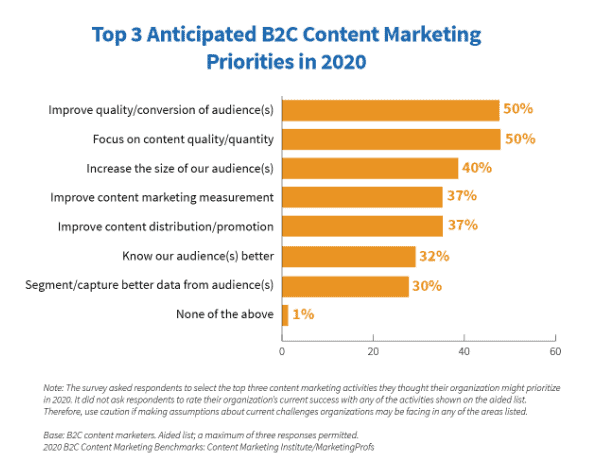
Next, let’s look at the B2B counterpart and analyze where content marketing is headed in that domain.
B2B Content Marketing Statistics
Did you know that 61% of all B2B transactions start online, and 51% of customers turn to social media to do their initial research?
That’s why content marketing is useful for B2B organizations. Indeed, in an analysis of 500 SaaS companies, the top 10% SaaS blogs averaged 104,000 organic search visits.
Let’s look at more B2B content marketing statistics to help you make an informed decision.
1. In the last 12 months, 86% of B2B marketers report creating brand awareness, 79% have educated their audiences, and 75% have built credibility/trust.
So how can you achieve success with content?
2. Successful B2B content marketers document their strategy and ensure that it’s cohesive with their business goals & target audience. Further, 44% of these top performers operate as a centralized content marketing group that works across the organization.
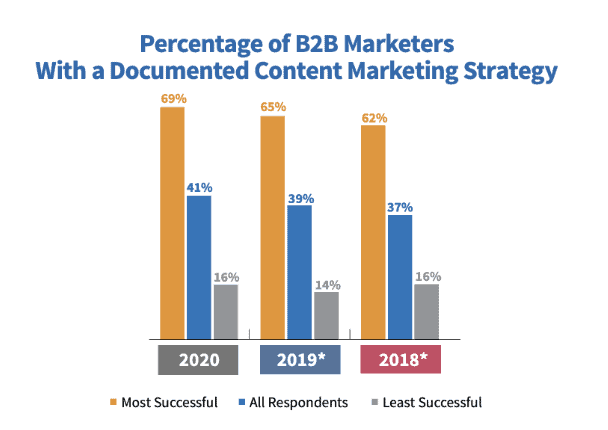
3. 32% of B2B marketers lack a full-time person dedicated to content marketing. However, the number drops to 13% in the case of top performers. To see content marketing bear fruit, you need a dedicated team to dedicate themselves.
4. Of course, you can outsource help for filling the gap in your skillset. Content creation is the most outsourced content marketing activity, with 84% of respondents likely to outsource it.
If you want an expert content creator/content strategist, then you can drop me a line with your requirements.
5. When it comes to links, 93% of B2B content ends up attracting zero external links.
Want better content performance in terms of links and shares?
Then write longer posts!
Why?
6. In an analysis from over 52,892 B2B articles by BuzzSumo, 73.99% of content pieces (i.e. 39,136 articles) were below 1000 words. However, those between 1000 to 3000 words tend to produce higher evergreen scores, social engagement, and backlinks.
7. You can add variety by creating video content as well. A survey of tech B2B buyers found 53% of respondents finding videos as most useful. They are also most likely to share them.
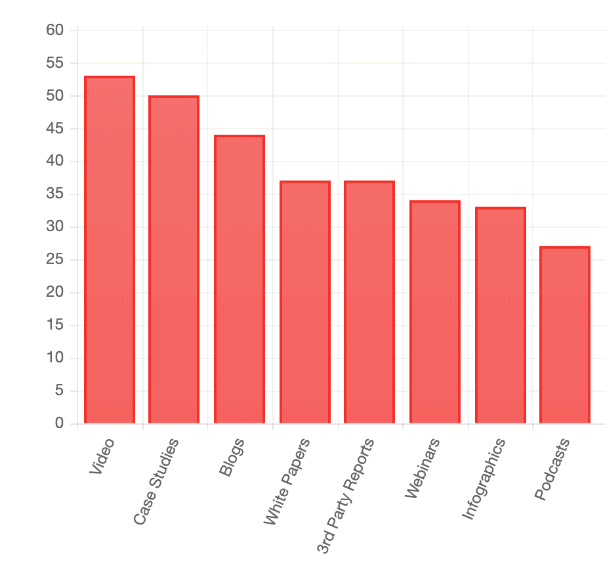
8. Instead of creating video scripts from scratch, you can repurpose existing pieces. It’s a reasonably popular tactic among marketers as it saves time and money.
9. When it comes to content marketing strategy, 88% of the most successful B2B marketers prioritize the informational needs of their audience over their organization’s sales/promotional message.
10. If you’re a SaaS company, you need to craft content for all the stages of the customer journey. You need to “consider what growth constraint content can alleviate”, as Jimmy Daly put it, and create ‘bottom of the funnel’ content to prevent dropoff.
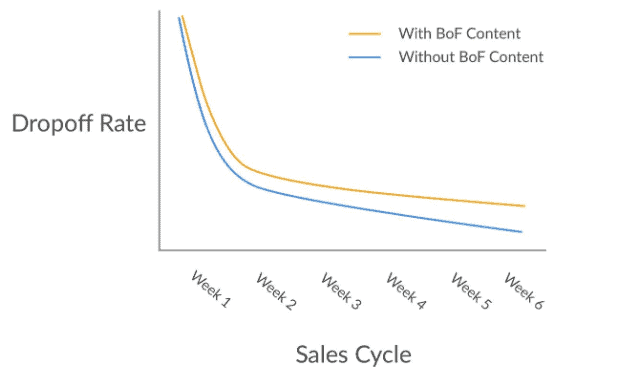
The fastest-growing SaaS companies (as I mentioned in my SaaS statistics article) are taking a mixed content marketing approach. It’s driven by PR content focusing on the company and its products, and educational content that solves problems of the readers.
11. Sure social shares and links are hard to get because of extensive content creation. But social media and organization’s website/blog are the top organic content distribution channels. Email closely follows.
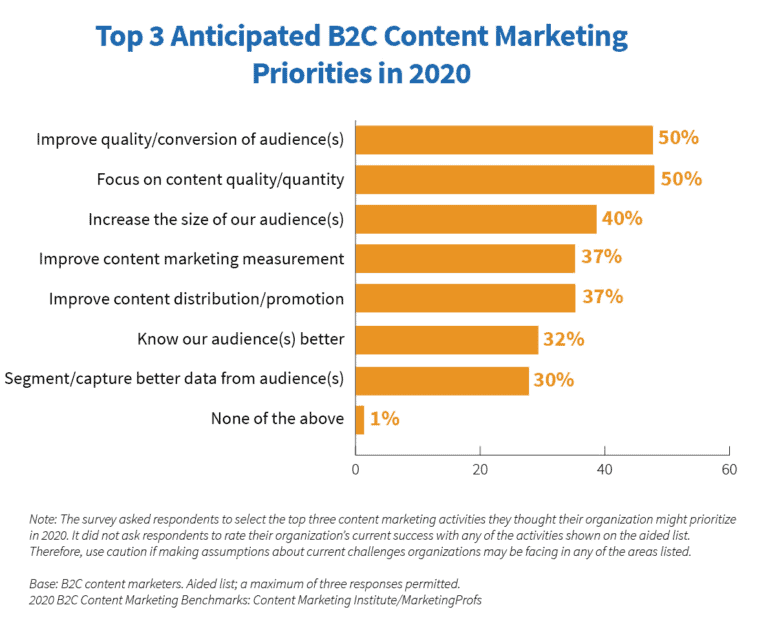
However, you need to go beyond owned media.
12. 46% of top performing B2B content marketers leverage influencer/media relations (vs. 34% overall) and 63% guest post in third-party publications (vs. 48%). I have personally grown websites (including T.E.A. and the one you’re reading) through guest posts and would recommend them.
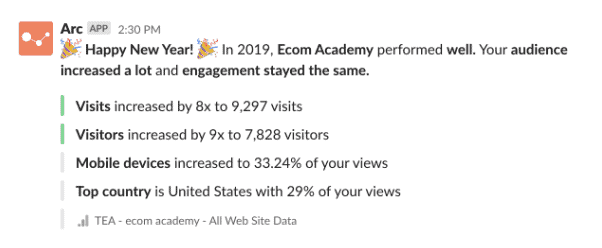
13. You can also give paid distribution a shot. It was leveraged by 84% of respondents surveyed by CMI. Among those who used paid distribution, 72% used paid social. So you can give it a shot.
If you feel adventurous, you can consider lesser used avenues like podcast advertising. Here’s how the sponsorship amount Ahrefs paid for appearances on a few popular podcasts.
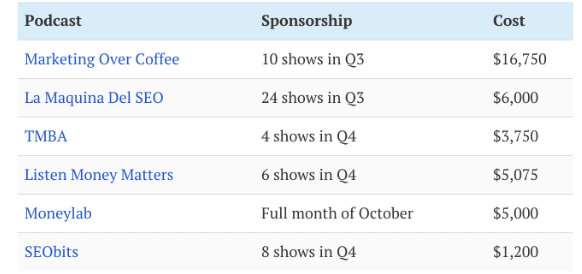
While the investment in content marketing should keep rolling, you also have to measure its effectiveness to prove it’s working.
14. You need to attribute metrics to measure the success of your content and ensure it gives a positive ROI. Marketing Charts found that 69% of B2B organizations will focus on measurement and analytics in 2020.
15. Of the 80% B2B marketers using metrics to measure content performance, 59% are doing an excellent or outstanding job at demonstrating ROI.
16. If you’re yet to measure your content marketing efforts, then start with understanding the top 10 most tracked Google Analytics metrics here. You can also begin with email engagement as it tops the metrics B2B marketers track.
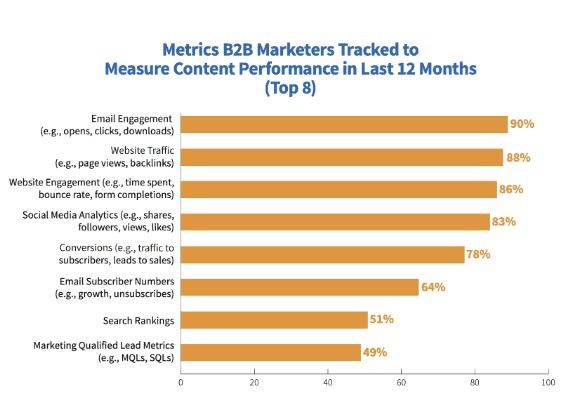
17. While over 40% of B2B organizations are likely to invest MORE time and money on content marketing in 2020, their top priority isn’t quantity. 48% of B2B content marketers will focus on the quality of their audience and conversions.
And finally, let’s unveil how much money it takes to achieve results from this content marketing thingy!
18. The good news is that even large B2B organizations that are successful with content marketing don’t have a budget of a million dollars.
36% of surveyed marketers report an yearly budget of less than $100,000. The average annual budget comes to $185,000 for all respondents however, it does take around $272,000 even for a small organization to report a content marketing success.
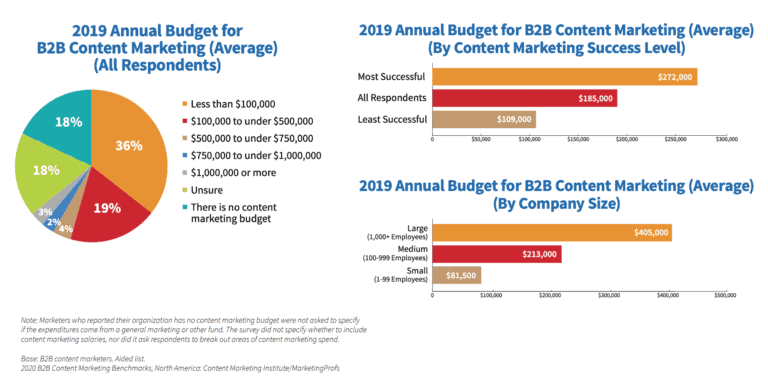
Video And Visual Content Marketing Statistics
I’ve already shared video marketing statistics showing where video marketing is heading in 2020. However, I want to summarize a few broad video stats and visual content marketing statistics again below.
1. 80% of people say that they switch between online search and video while buying. Which means brands need to focus more on producing videos.
So which platform is the favorite for videos.
2. The Social Media Examiner industry report found that 62% of marketers plan to increase their YouTube organic activities. And in their future video marketing activities, 71% plan to increase their use of YouTube.
3. Even the highest-earning bloggers put effort into producing videos instead of focusing on blogging alone.
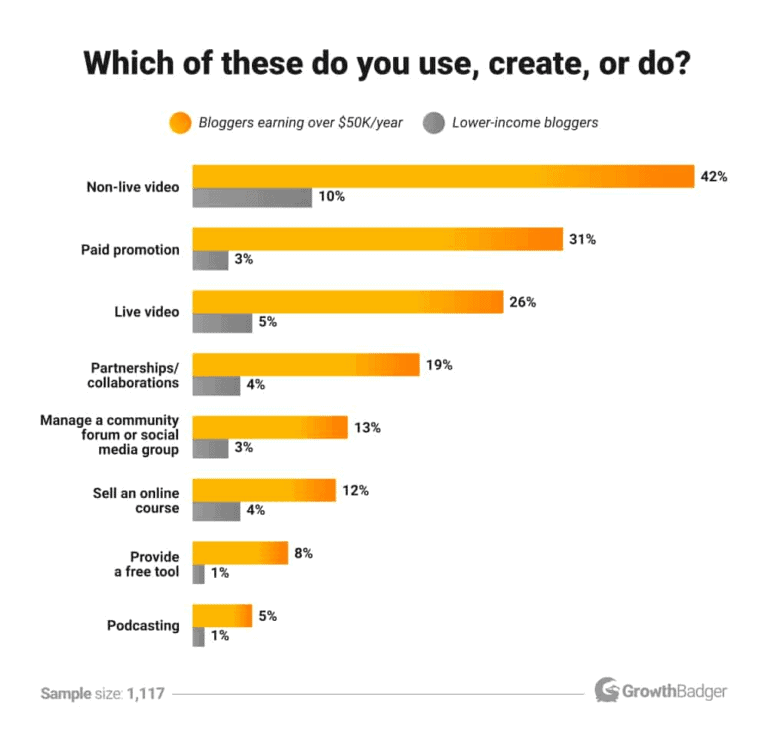
But live video isn’t at the top type of minds of marketers.
4. A surprising 43% of marketers don’t even use live video. And Facebook (at 34%) is the top pick for live videos.
5. For B2B organizations, it makes sense to invest in videos as the BuzzSumo evergreen score (that indicates higher backlinks and social shares over time) is higher for videos and infographics as compared to other types of B2B content.
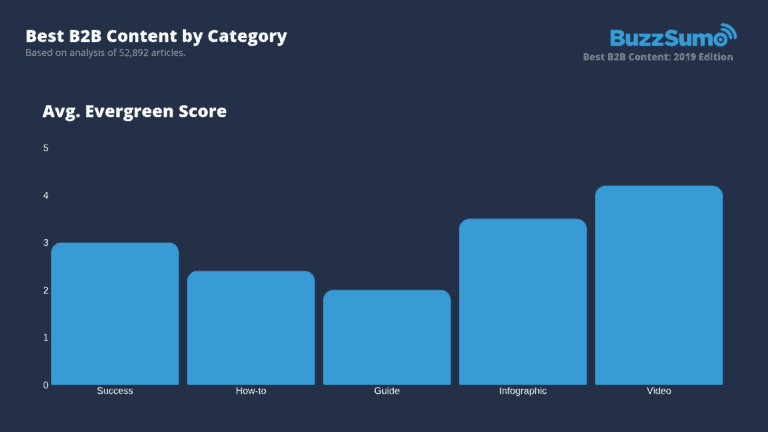
All set to produce videos?
6. Before launching, don’t forget to add subtitles as it could make users stick around for about 40% longer.
7. In the wake of the cancellation of all major business events and conferences, you can conduct webinars to deliver the same value. An average attendee spends a whopping 53 minutes consuming webinar content.
8. Web users scan text and read about 20% of the words on page during an average visit.
9. Further 65% of the general population are visual learners, and after three days of consumption, they can remember 65% of the visual information vis-à-vis 10% recall for written content.
Visuals are a must-have in your content marketing mix.
10. A Venngage survey of 200 content marketers predicted that visuals would remain an integral part of marketing strategies in 2020 and 2021 for 66% of businesses.
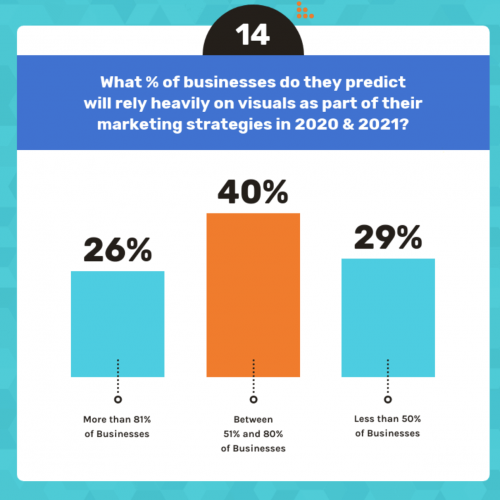
11. This year 25% of marketers anticipate spending between 10% to 20% of their total budgets on visual content creation.
12. 74% of marketers said that they used visuals in more than 70% of the articles they published. The type of visuals they rely on the most are stock photos closely followed by original graphics.
Derek Gleason, content lead at ConversionXL calls the use of generic stock photography as “editorial debt.” If there’s fierce competition in your niche, be wary that they are easily replicable. So you might need to edit these out later.
All those shortcuts you’re taking now—neglecting outdated content, using stock photos, skimping on proofreading? That’s editorial debt.
If past experience doesn’t inspire me to scroll past ads, SERP features, and the top blue links to look for *your* site—I’ll never find it.
— Derek Gleason (@derek_gleason) October 17, 2019
13. If you’re writing long and in-depth articles, then don’t fret adding 10+ images to it. Orbit Media found that bloggers who include 10+ images per post are 2.5x more likely to report “strong results” than the average blogger.
14. Eye Tracking study by Nielsen found that users pay close attention to images/photos that contain relevant information and ignore fluffy pictures used to “jazz up” web pages. So original graphics and videos are a better bet.
15. Most marketers spend less than 2 hours each week to create visuals and most of them struggle at producing engaging visuals consistently.
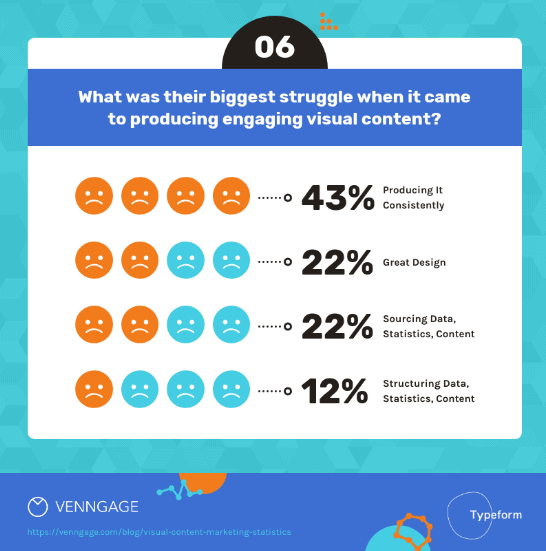
If you’re in the same boat, then experiment with hiring professional designer agencies (like Graphic Rhythm Design). You can also leverage visual content creation software like Canva and Venngage that come with handy templates.
16. Ready to create visuals for your brand? Then don’t forget to look at the 2020 color trends by Shutterstock. It predicts sensational shades will rule, including Lush lava, Aqua Menthe, and Phantom Blue. Your palette selection is important as colors can improve your brand recognition by up to 80% as per Xerox.
Final Thoughts
Content marketing is an effective way of building brand awareness, nurturing relationships, and establishing trust with your audiences. In this article, you saw content marketing statistics showing what’s proven to work and where it’s headed.
I highly recommend you to not adapt the insights from this article as a starting point and mix it up with your creativity to devise a sound content strategy. Beware of jumping on these trends blindly as it might not make business sense and can result in you being an average of all others who follow them.
What are your major takeaways from the article? Are there prominent content marketing stats that I missed out on? Share your thoughts in the comments below.
B2B Content Marketing Statistics 2021 [Infographic]
If you’re a visual learner, then you’re in for a treat. I’ve collaborated with Graphic Rhythm to compile the key stats from the above piece into an infographic. Enjoy!

